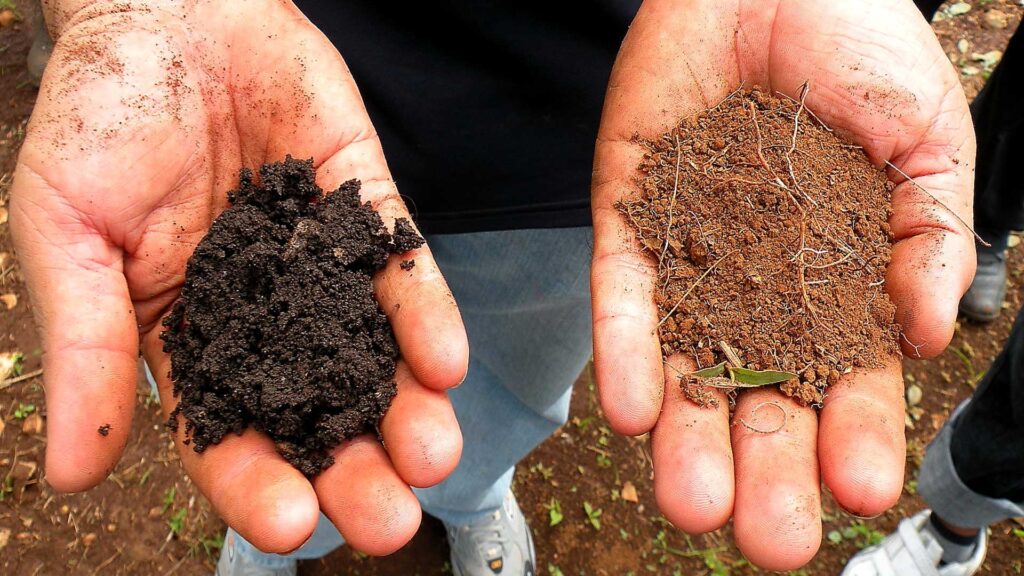Soil quality plays a major role in lawn establishment, as well as in its development and health. Too often, recurring problems with residential lawns are due to poor soil quality. These problems could easily be eliminated, had the lawn been established properly from the start. We explain it all here. But don’t worry, it is possible to improve the soil quality even after the lawn has been planted, and the results are very interesting.
A few definitions
There are 4 main soil types: clay, loam, sand and sandy. Depending on your location and the way your land was made, your lawn is installed on one of these soil types, which has a significant influence on your lawn’s health.
Clay soil : Soil made of very fine particles, soft to the touch and that becomes sticky when wet. Clay soils contain at least 40% clay, are fairly fertile, but tend to compact easily. They absorb water slowly, but hold it in for a long time.
Silty soil : Soil made of particles of different sizes, without predominance. It is a well-drained soil, with good water retention and aeration, but who tends to form a crust, thus making it impermeable.
Loamy soil : Balanced soil (40-60% sand, 30-50% silt and 15-25% clay) very effective at water and nutrient retention, air circulation and drainage.
Sandy soil : Soil mainly made of large particles, which has little structure. Sandy soils contain more than 60% sand and are not very fertile because they retain very little water and dry out quickly.
The ideal soil for the lawn
For the lawn to establish itself efficiently, to blossom fully and to develop a strong and deep root system, the ideal soil is a sandy-clay loam rich in organic matter and slightly acidic (pH 6.0 to 7.0). In Quebec, clay and sandy soils are the dominant ones. The soil structure must therefore be modified by adding different materials to achieve the right balance for growing lawns.
Modify a sandy soil
If your soil is rather sandy, you can improve its structure by increasing the organic matter it contains by adding compost. A spring topdressing with compost will be very useful to improve the water and nutrient retention quality of the soil.
Modify a clay soil
If clay dominates your land, topdressing with a sandy soil in the fall will improve its structure by making it less compact, which will allow better circulation of both water and oxygen. The addition of organic matter through compost will also be beneficial to the soil structure.
Change the pH of the soil
Lawns like slightly acidic soil, so the ideal pH should be between 6.0 and 7.0. A soil analysis will allow you to know the pH level of your soil, and to obtain the right recipe to correct it if necessary. Often, Quebec soils are too acidic and need this acidity reduced in order to reach the desired pH level. If you notice the presence of wild strawberry and ground ivy, it is a good indicator of the acidity of your soil and that an analysis is required. Soil acidity is corrected with dolomitic lime, applied in the spring or fall. Ask your Nutrite Expert, who will be able to perform the required soil tests and suggest the necessary corrections.
The structure of your soil improves over time. Even if it is of very good quality, you must make sure to maintain your soil at the right level by providing it with the elements it needs. Just as you fertilize your plant to keep it healthy, it is important to nourish your soil so that it can offer the best to your plants, so that they can establish themselves and develop to their full potential. Choose the Loyalty PLUS package and let our experts work to improve the structure and quality of your soil while caring for your lawn.




